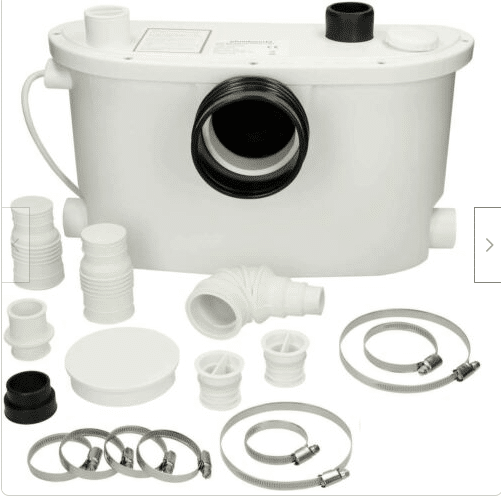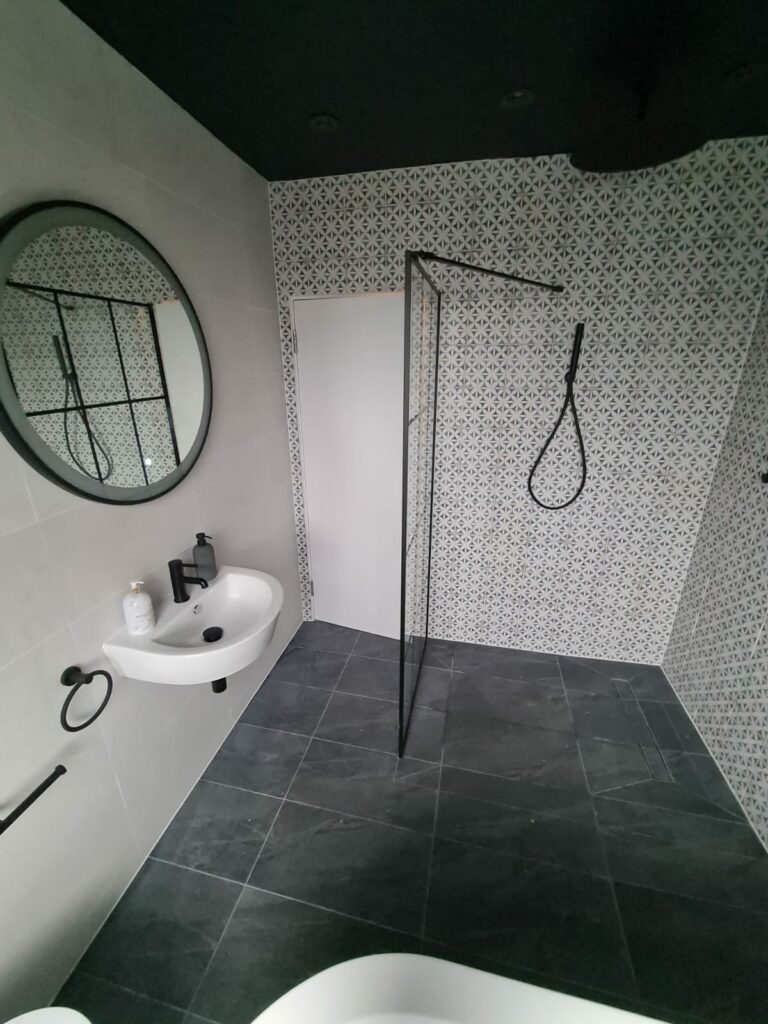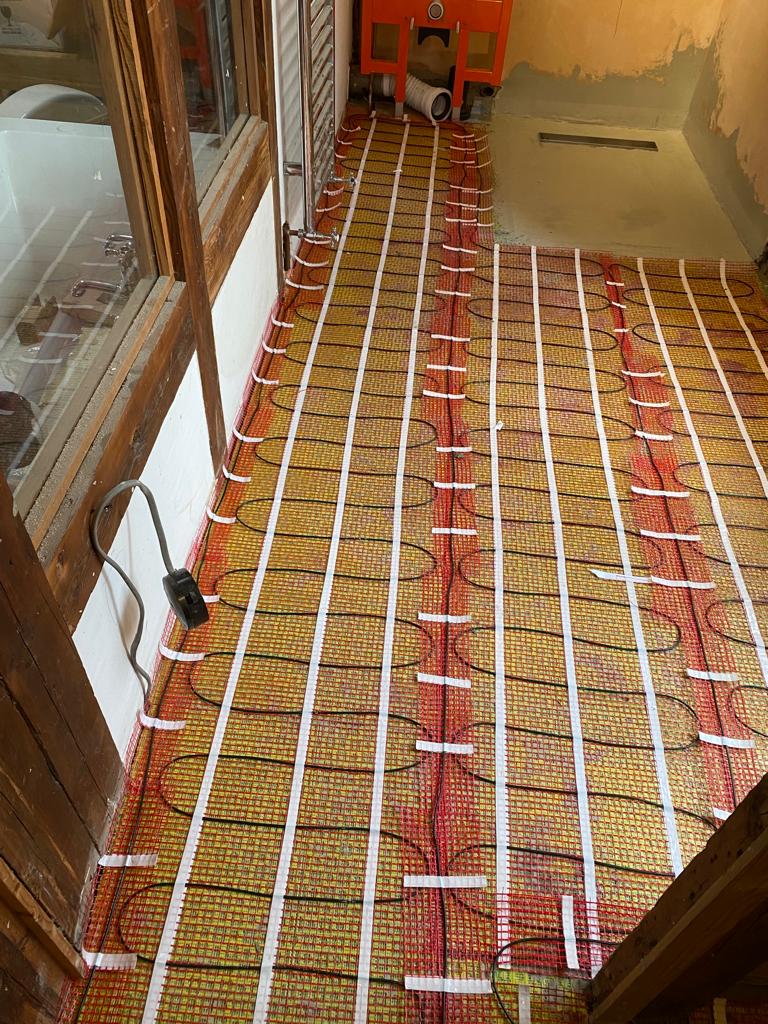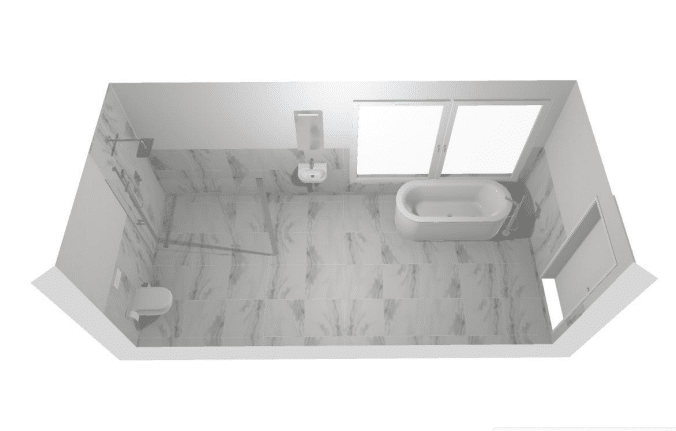When planning a bathroom renovation, the question of which pipes to use might not seem like the biggest concern. Yet, it’s a choice that can affect both your wallet and your peace of mind in the long run.
Whether you’re dealing with an old property’s plumbing or installing a brand-new suite, selecting between copper and plastic piping is key. Copper has been king for years thanks to its durability, but plastic pipes are gaining ground due to their ease of installation and cost benefits.
Copper pipes boast impressive antibacterial properties: they keep water clean by preventing bacteria growth. This fact alone could sway your decision if health and cleanliness are top priorities for your home.
Our article is here to guide you through each material’s pros and cons – from environmental impact to flexibility during fitting – helping you make an informed decision that aligns with your renovation needs and budget.
Find out which pipes promise the smoothest flow for your project! Keep reading; we’ve got all you need right here.
Benefits of Using Copper Pipes for a Bathroom Renovation
Copper pipes have a longer lifespan and are more environmentally friendly due to their recyclability. Additionally, copper pipes also possess antimicrobial properties, which can help maintain a cleaner and healthier bathroom environment.
Longer lifespan
Copper pipes boast remarkable durability, gaining a solid reputation for long-term use in plumbing systems. Their strong resistance to corrosion contributes to an extensive service life, often lasting several decades with minimal maintenance.
Homeowners seeking a reliable option for their bathroom renovation find copper piping materials withstand the test of time.
Environmentally conscious choices also play a part in selecting pipe materials for your water supply system. The next section delves into how choosing copper can benefit not only your home but the planet too.
More environmentally friendly
Plastic pipes are a more environmentally friendly option for bathroom renovations, as they are made from recyclable materials and require less energy to manufacture compared to copper pipes.
This means that choosing plastic pipes can contribute to reducing the overall environmental impact of the renovation project. Additionally, plastic pipes have a lower carbon footprint during transportation due to their lightweight nature, further supporting their eco-friendly credentials.
When considering sustainability in bathroom renovations, it is important to weigh the environmental impact of different plumbing materials. Plastic pipes offer an advantage in this regard by providing a greener alternative without compromising on quality or durability.
Antimicrobial properties
Copper pipes have intrinsic antimicrobial properties, making them an ideal choice for bathroom renovations. This biostatic quality helps prevent bacterial growth and ensures cleaner water supply, promoting a healthier environment in the bathroom.
The natural antimicrobial benefits of copper pipes also contribute to reducing the risk of contamination within the plumbing system, providing an added layer of safety and hygiene.
Furthermore, copper’s antimicrobial properties make it particularly well-suited for areas prone to moisture and humidity like bathrooms. By inhibiting bacteria growth on its surface, copper piping supports a more sanitary plumbing system overall.
Benefits of Using Plastic Pipes for a Bathroom Renovation
Plastic pipes offer flexibility during installation, making them easier to work with in tight spaces and around existing fixtures. They are also less likely to freeze in cold weather and are cost-effective, making them a popular choice for bathroom renovations.
Flexibility during installation
Plastic pipes offer greater flexibility during installation, making them ideal for navigating through tight spaces and being poked through smaller openings. This feature is especially advantageous during bathroom renovation projects, where access to plumbing can be limited.
The ability of plastic pipes to bend and maneuver provides a practical advantage when working around obstacles or existing structures within the renovation space.
Copper pipes, although durable and long-lasting, lack the same level of flexibility during installation as plastic pipes. The rigid nature of copper piping may require more effort and planning to accommodate challenging spaces or intricate layouts in a bathroom renovation project.
Less chance of freezing
Copper pipes have the advantage of being more resistant to freezing compared to plastic pipes due to their ability to withstand a wider range of temperatures. This makes them a reliable choice for areas with extreme weather conditions, ensuring continuous water flow without the risk of frozen pipes.
Plastic pipes, on the other hand, are prone to freezing, which can lead to potential damage and inconvenience.
When it comes to durability in cold climates, copper pipes offer a more dependable solution by minimising the risk of water blockages caused by freezing. With their superior resistance to low temperatures, copper pipes provide peace of mind for homeowners in regions where freezing is a concern.
Cost-effective
Plastic pipes are often a cost-effective choice for bathroom renovations due to their lower material and installation costs. They can be installed more quickly, saving on labour expenses, and their flexibility allows for easier manoeuvring through tight spaces.
Plastic’s resistance to corrosion also reduces the need for maintenance or replacements, providing long-term savings. Complementing these advantages, plastic pipes’ insulation properties contribute to energy efficiency by reducing heat loss in hot water pipes.
In contrast to plastic piping materials, copper pipes are considered cost-effective over time due to their longevity and durability. Although initial installation costs may be higher than those of plastic competitors, the extended lifespan and low maintenance requirements make them a wise investment in the long run.
Helpful during remodelling
Plastic pipes, known for their flexibility during installation, can be extremely helpful during remodelling. Their ability to be poked through smaller openings makes them an ideal choice for navigating tight spaces and complex layouts.
The cost-effectiveness of plastic pipes is also advantageous, providing a practical solution for renovation projects with budget constraints.
Copper pipes, on the other hand, offer the benefit of being easily accepted by all building codes and can be a suitable option due to their small diameter. They provide ease of use in various plumbing fixtures and systems during bathroom renovations.
Can be poked through smaller openings
Plastic pipes offer the advantage of flexibility during installation, allowing them to be easily maneuvered through tight spaces and poked through smaller openings. This feature makes plastic pipes particularly helpful in renovation projects where access is limited, providing a practical solution for navigating challenging plumbing layouts.
The ability to navigate small openings with ease can streamline the installation process and reduce the need for extensive modifications to accommodate traditional rigid piping systems.
Copper pipes, on the other hand, may present challenges when faced with confined spaces or intricate plumbing configurations due to their rigidity. Plastic pipes’ flexibility enables them to be threaded through narrow gaps, making them an adaptable choice for bathroom renovations where space constraints are a consideration.
Conclusion
Ultimately, the choice between copper and plastic pipes for a bathroom renovation depends on specific needs. Copper pipes offer antimicrobial properties and durability, while plastic pipes excel in flexibility and cost-effectiveness during installation.
Both materials have their advantages and drawbacks, so it’s essential to consider factors such as cost, flexibility, and project requirements before making a decision. When weighing the options for plumbing materials in a bathroom renovation, taking these aspects into account will ensure an informed choice that meets your specific needs.
FAQs
1. What should I consider when choosing between copper and plastic pipes for my bathroom renovation?
When selecting plumbing materials for bathroom remodeling, weigh up cost-effectiveness, leak prevention capabilities, and the ease of pipe installation to decide whether copper or plastic piping options are more suitable.
2. Are plastic pipes a good choice for bathroom plumbing during a renovation?
Plastic pipes are often chosen as a cost-effective and flexible option in home improvement projects like bathroom renovations, due to their durability against corrosion.
3. How do copper pipes compare to plastic ones in terms of reliability?
Copper pipes have been a traditional choice for water pipe materials because of their long-term reliability and resistance to leaks which can be important during bathroom plumbing work.
4. Can installing new pipes affect my renovation choices for the rest of the bathroom?
Yes, your selection from piping options can influence other renovation materials due to differences in pipe installation requirements and space considerations within your overall home improvement plan.
5. Is there an advantage of one pipe material over another when considering future maintenance?
Comparing pipe materials, one must assess not just initial costs but also long-term maintenance; while copper may last longer without issues, plastic is less prone to mineral build-up that can affect water flow.









